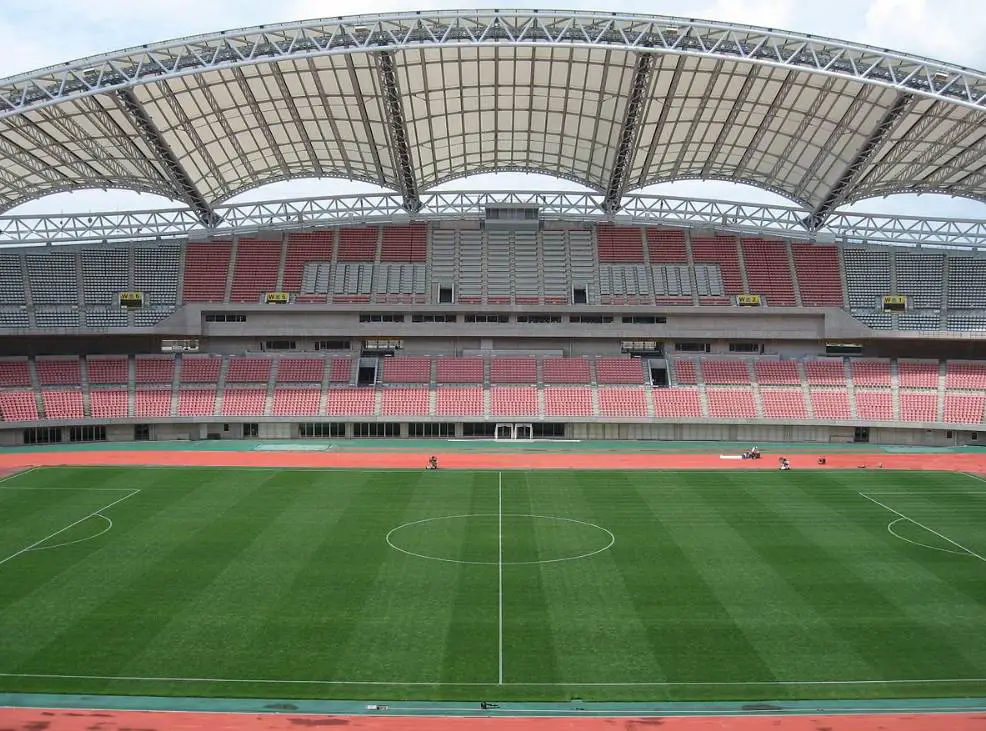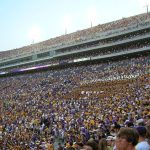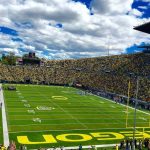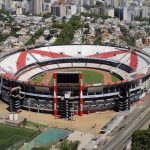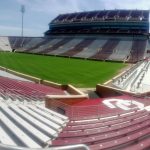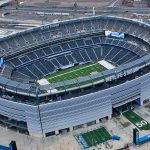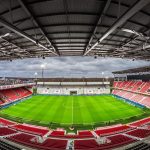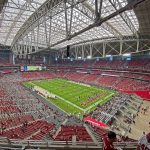Did you know that baseball is the most popular spectator sport in Japan?
The Nippon Professional Baseball League was established way back in 1936. The sport has been popular in the country ever since, even though sumo wrestling is the national sport.
Regardless of this notion, association football (or soccer in 9 countries) has exponentially grown in popularity since the establishment of the Japan Professional Football League in 1992.
More fans of the game were added after Japan and South Korea co-hosted the FIFA World Cup in 2002. This also resulted in plenty of ne stadiums being constructed.
In this article, you’ll discover some of the biggest stadiums in Japan, a country in which you can expect to see astonishing arenas.
1. Japan National Stadium
- Location: Tokyo
- Capacity: 80,016
The Japan National Stadium is officially referred to as the “National Stadium.” Formerly it was known as the Olympic Stadium and that’s because it was specially constructed to serve as the main venue of the 2020 Summer Olympics, an event that took place in Tokyo.
The stadium is located in Kasumigaoka, one of the districts that make up the special ward of Tokyo called Shinjuku just west of Tokyo’s historical heart. The beautiful stadium was constructed on the location of the Old National Stadium which was demolished in 2015 to make way for this ultra-modern sports temple.
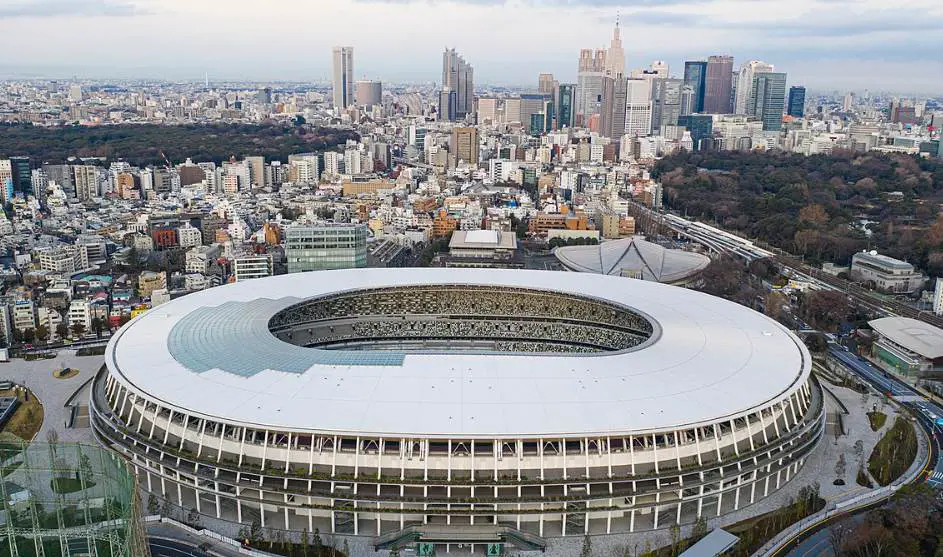
2. Nissan Stadium
- Location: Yokohama
- Capacity: 72,327
Nissan Stadium is also commonly referred to as “International Stadium Yokohama” and is located in Yokohama. It’s the second-biggest stadium in Japan and is located in the second-biggest city in the country. It was the biggest stadium in Japan for 21 years before the completion of the National Stadium.
The stadium opened its doors in 1998 and was a prominent venue during the 2002 FIFA World Cup. It hosted 3 group stage games and the final game between Brazil and Germany (on 2-0 by Brazil). Today, the stadium serves as the home of the Yokohama F. Marinos, a popular football club in Japan.
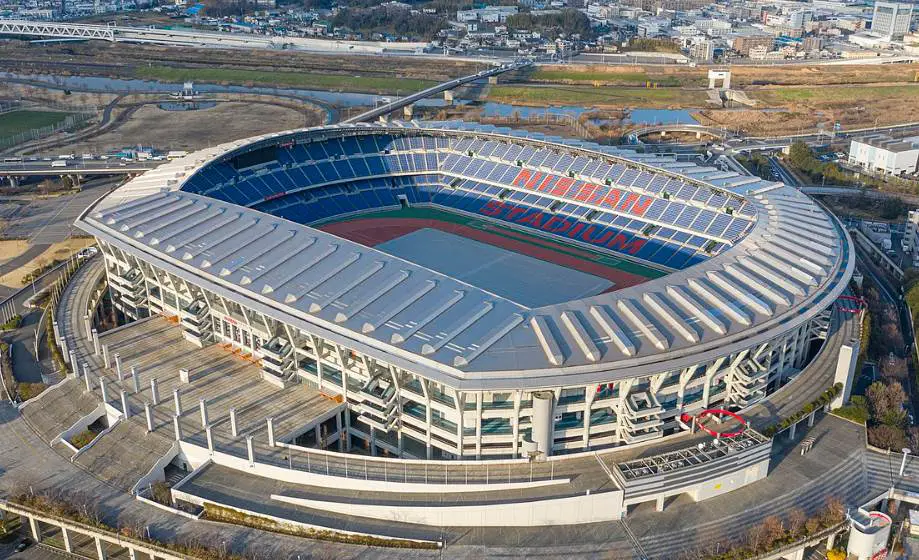
3. Saitama Stadium
- Location: Saitama
- Capacity: 63,700
Saitama Stadium is one of the most fascinating stadiums in Japan because it’s the largest football-specific stadium in the country. Both the National Stadium and Nissan Stadium feature athletics tracks, a feature that football fans don’t like because of the distance it creates between the terraces and the playing field.
The stadium is located in the Japanese city of Saitama and was completed in the year 2001. It hosted 3 group games during the 2002 FIFA World Cup and also the semi-final between Brazil and Turkey (1-0 to Brazil). Today, it serves as the home of the football club Urawa Red Diamonds.
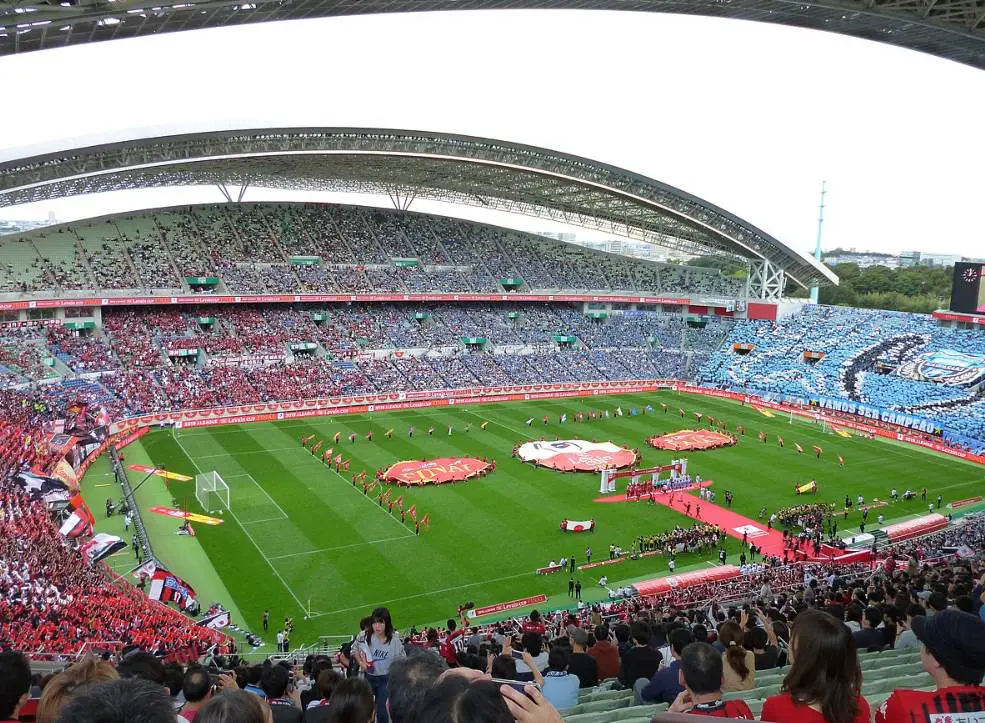
4. Shizuoka Stadium
- Location: Fukuroi
- Capacity: 50;889
Shizuoka Stadium is the centerpiece of a large sports complex in Fukuroi City, a city located a few hundred kilometers southwest of Tokyo. This sports complex also features an indoor arena and athletics track and is known as the Ogasayama Sports Park or “ECOPA.”
The stadium was completed in 2001 and hosted two World Cup group games and the Quarter-Final between future winners Brazil and England (won 3-2 by Brazil). The stadium is home to a fanatic derby between the two football clubs Shimizu S-Pulse and Júbilo Iwata, a game referred to as the “Shizuoka Derby.”
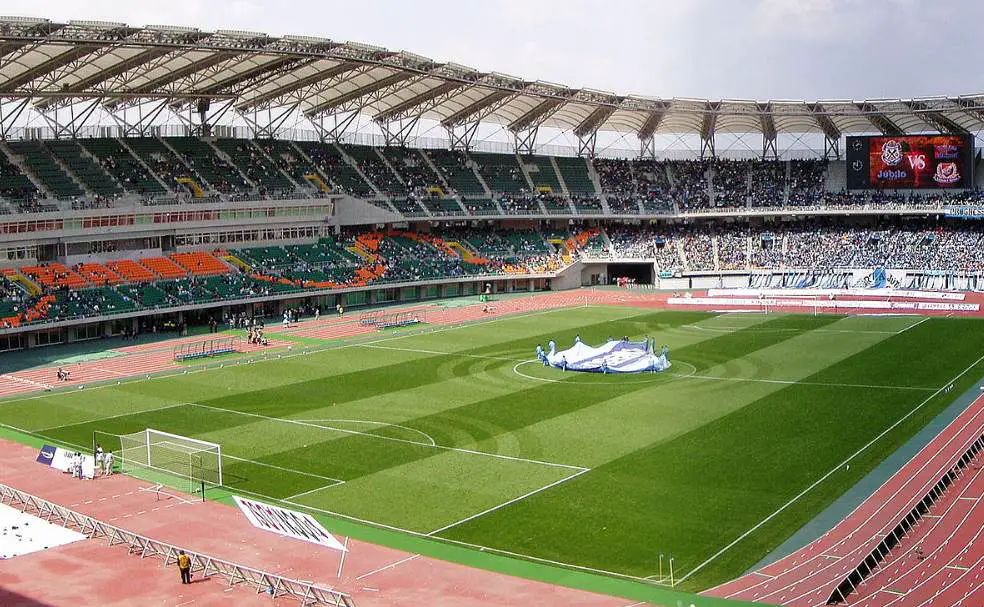
5. Ajinomoto Stadium
- Location: Tokyo
- Capacity: 49;970
Ajinomoto Stadium is sometimes referred to as “Tokyo Stadium” and is located in Chōfu, Tokyo, a western suburb of this immense city. The stadium is the home venue of two Tokyo-based football clubs called FC Tokyo and Tokyo Verdy.
This was the first stadium in Japan in which the naming rights were purchased. This is why it’s referred to as the Ajinomoto Stadium, a reference to a large food manufacturer in Japan called Ajinomoto Co., Inc.
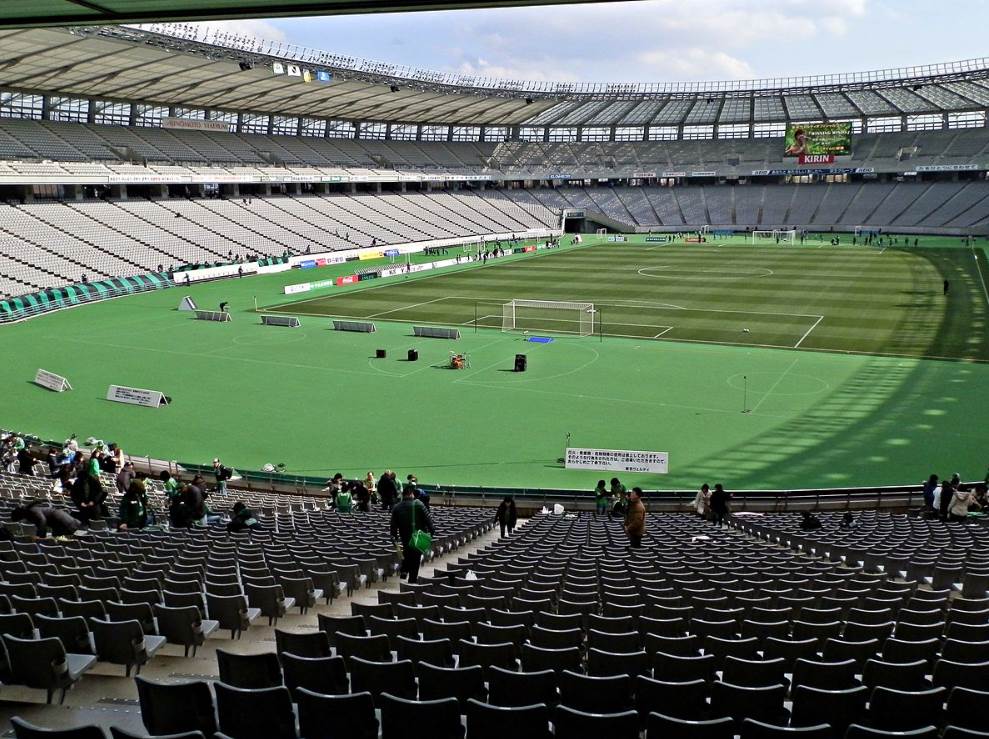
6. Miyagi Stadium
- Location: Rifu
- Capacity: 49,133
Miyagi Stadium is the common name of the Q&A Stadium Miyagi, a stadium in the town of Rifu, Miyagi Prefecture in Japan. It was constructed between 1996 and 2000 and hosted 3 games during the 2002 FIFA World Cup.
The most defining feature of this big stadium in Japan is that it has a crescent-shaped roof. This isn’t just an architectural highlight but has a special significance in the region as it’s meant the resemble images of Date Masamune (1567-1636), a local ruler and the founder of the modern-day city of Sendai.
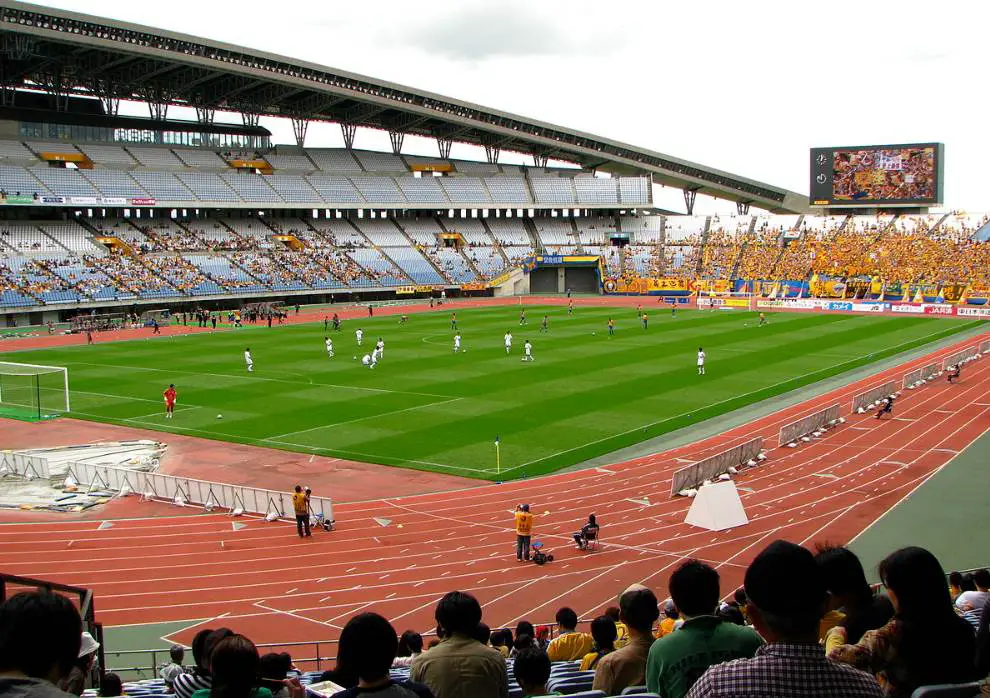
7. Yanmar Stadium Nagai
- Location: Osaka
- Capacity: 47,816
Yanmar Stadium Nagai is an amazing stadium located in the heart of the huge city of Osaka. The stadium was originally constructed in the year 1964 and expanded in 1996 to serve as a venue for the World Cup. It was completely renovated once again in the year 2007.
The stadium has a history of football games because the opening match inside the stadium was the opening game of the football tournament of the 1964 Summer Olympics. This was a game between Japan and Yugoslavia (won 1-6 by Yugoslavia). Today, it serves as the home venue of the football club Cerezo Osaka.
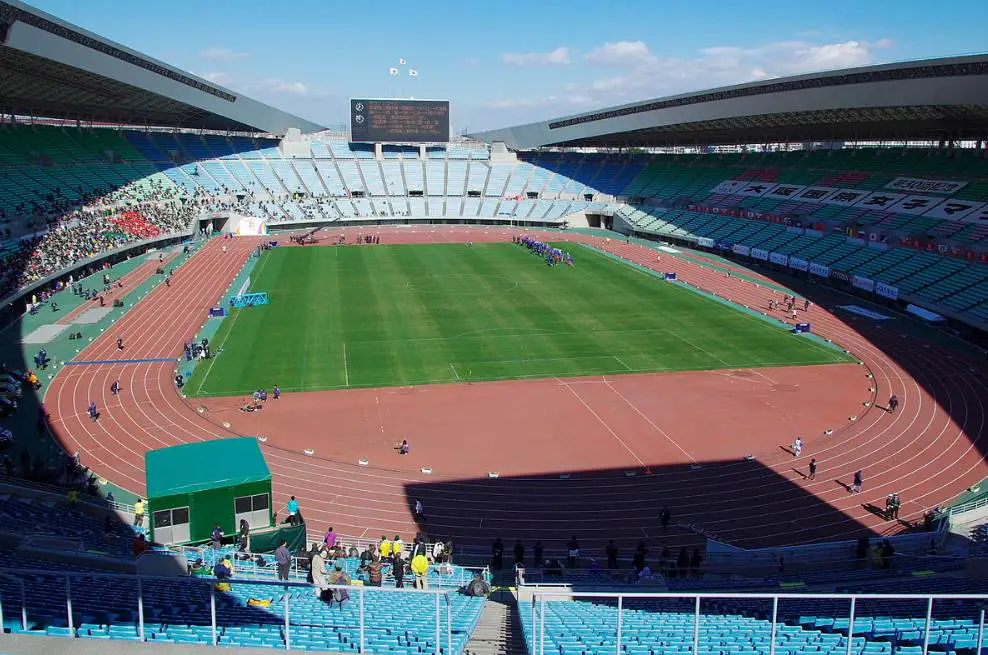
8. Koshien Stadium
- Location: Nishinomiya
- Capacity: 47,508
Hanshin Koshien Stadium or simply “Koshien Stadium” is located in Nishinomiya, Hyōgo Prefecture, a city right in between the major cities of Kobe and Osaka. It’s a special stadium in this list of biggest stadiums in Japan because it serves mainly as a baseball park as opposed to association football matches.
It’s also the oldest stadium on this list because the original version of this baseball park was completed in the year 1924, 12 years before the first official baseball league in Japan was established. It’s the home of the baseball team Osaka Tigers and also hosts the annual American football game called the “Koshien Bowl.”
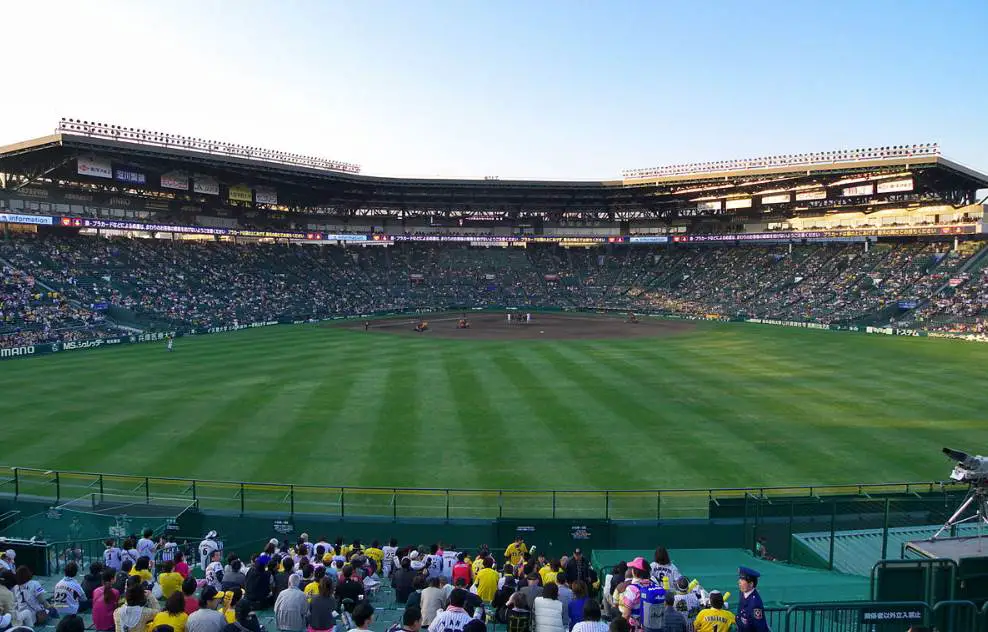
9. Toyota Stadium
- Location: Toyota
- Capacity: 44,380
Toyota Stadium is arguably the most beautiful of all stadiums in Japan. It’s not named after the famous motor vehicle producer but for this location, the city of Toyota in the Aichi Prefecture, a city just east of Nagoya.
The stadium was constructed between 1997 and 2001 and remarkably didn’t serve as a venue for the 2002 FIFA World Cup. Today, the stadium is used by the association football club Nagoya Grampus and the rugby union club Toyota Verblitz.
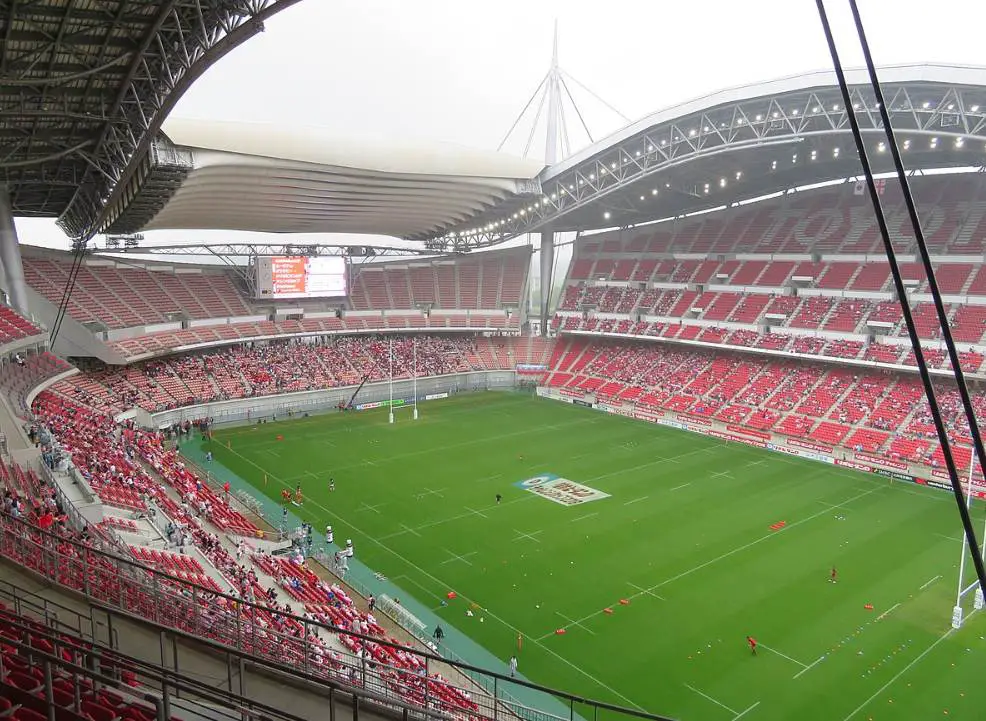
10. Denka Big Swan Stadium
- Location: Niigata
- Capacity: 42,300
Denka Big Swan Stadium is commonly referred to as “Big Swan” and is a wonderful stadium in Niigata City, a few hundred kilometers north of Tokyo. It was constructed between 1997 and 2001 and hosted 3 games during the World Cup.
The name Denka is a reference to Denki Kagaku Kogyo (Denka), a Japanese chemical company that bought the naming rights. The stadium serves as the home venue of the football club Albirex Niigata which plays in the J2 League, the second division of Japanese football.
